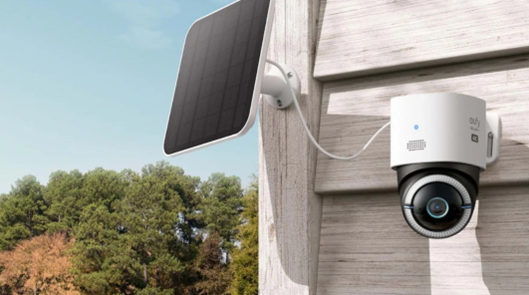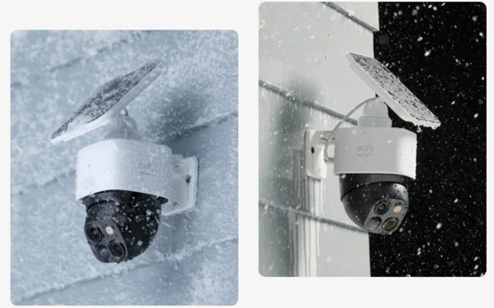The service life of outdoor security cameras depends on several critical factors that camera owners should consider. From the quality of manufacturing to external environmental influences, each element plays a pivotal role in determining the durability and performance of these systems. For those seeking long-term performance, investing in the best outdoor security camera systems can make a substantial difference in resilience and functionality. Additionally, technological innovation continually shapes the relevance of security installations, highlighting the need for regular updates. In this blog, we dive into the primary factors affecting outdoor security camera longevity and offer practical advice for homeowners and businesses eager to maintain their systems effectively.

Several factors directly impact the longevity of outdoor security camera systems. Together, these factors determine not only how long a camera lasts but also how effectively it performs throughout its life.
The quality and build of an outdoor security camera can significantly impact its service life. Cameras made with durable materials, such as corrosion-resistant metals and sturdy plastics, tend to endure adverse conditions better than those constructed with cheaper alternatives. Waterproof and dustproof designs help, especially in harsh climates where rain and dust are prevalent. Premium models often include protective casings that shield the internal components from damage. Manufacturers who emphasize quality control during production usually provide cameras with enhanced longevity. Investing in a well-built camera upfront might involve a higher initial cost, but the extended lifespan and reliability can offer long-term value and peace of mind.
Outdoor cameras face various environmental challenges, from extreme temperatures to precipitation and wind. These weather conditions can directly affect the camera’s exterior and internal electronics. Cameras with weatherproof ratings provide better resilience against rain, snow, and dust. In regions with high humidity or salt air, corrosion can become a significant concern, making robust seals and coatings essential. Ultraviolet rays from the sun pose another threat, potentially degrading material integrity and affecting image sensors over time. To combat these effects, consider strategic placements to avoid direct sunlight and invest in models specifically designed to withstand severe weather conditions.

A reliable power supply is crucial for the optimal functionality of outdoor security cameras. Fluctuations in power can lead to unexpected shutdowns, reducing the camera’s operational lifespan. Use uninterrupted power supply systems and ensure regular maintenance of wiring and connections to prevent these issues. Cameras that are constantly recording or have frequent motion detection activations may experience more wear due to increased usage. Adjusting settings to record only during specific times or under certain conditions can help extend their service life. Consistently monitoring battery-operated cameras helps avoid unplanned outages that can compromise system integrity.
Regular maintenance is integral to extending the service life of outdoor security cameras. This involves cleaning lenses and camera enclosures to ensure clear visibility and prevent obstructions. Check connections periodically to secure power cables and data transmissions from environmental wear. Software updates are vital, as they provide security patches and enhance camera functionality, ensuring relevance and effectiveness. Calibrating camera settings according to seasonal changes can maximize performance and efficiency. Establish a maintenance routine that addresses both hardware and software components, promoting system longevity and reducing the risk of unexpected failures.
Technological advancements continuously redefine the expectations from security systems. Newer camera models often include features such as higher resolution, improved night vision, and AI-driven analytics. Although these innovations improve security capabilities, they can render older systems obsolete or less effective. Upgrading components or the entire camera system may be necessary to keep up with current standards. Staying informed about technological trends helps make timely decisions, ensuring camera systems remain effective against evolving security threats. Balancing the potential benefits of new technologies with existing systems, can optimize both cost and functionality.
To enhance the lifespan of outdoor security cameras, invest in high-quality, weatherproof models. Regular checks on power connections and battery levels protect against outages. Adopt strategic usage patterns to avoid unnecessary wear. Implement a consistent maintenance schedule that includes cleaning, software updates, and periodic inspections. Consider environmental factors when installing cameras, orienting them away from extreme weather exposure. Incorporate technology upgrades that offer compatibility with existing setups. Educating users on these practices can significantly contribute to extending camera longevity and ensuring they function reliably over time.
The longevity of outdoor security camera systems directly ties to factors such as quality, environmental conditions, and maintenance practices. By focusing on durability during purchase, ensuring a reliable power supply, and maintaining regular care routines, users can maximize camera lifespan. Evolving technology presents opportunities to enhance security capabilities, highlighting the importance of staying informed and making timely upgrades. With attention to these details, homeowners and businesses can gain the most value from their investment, ensuring effective and sustained protection for their properties.